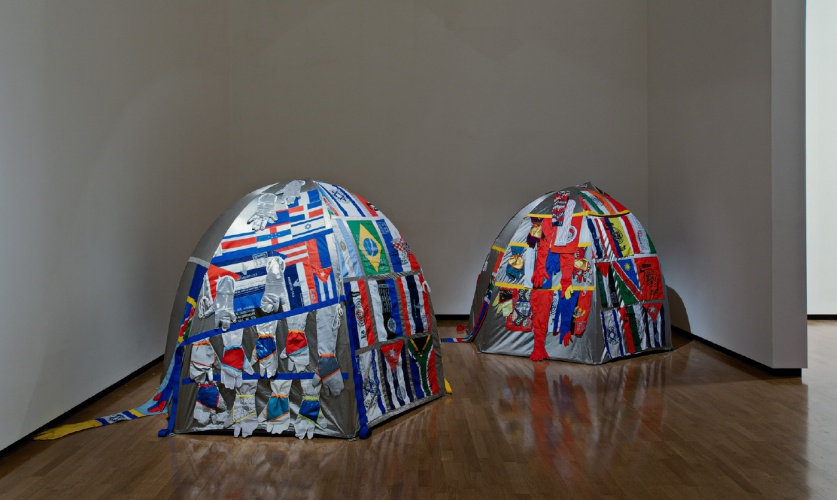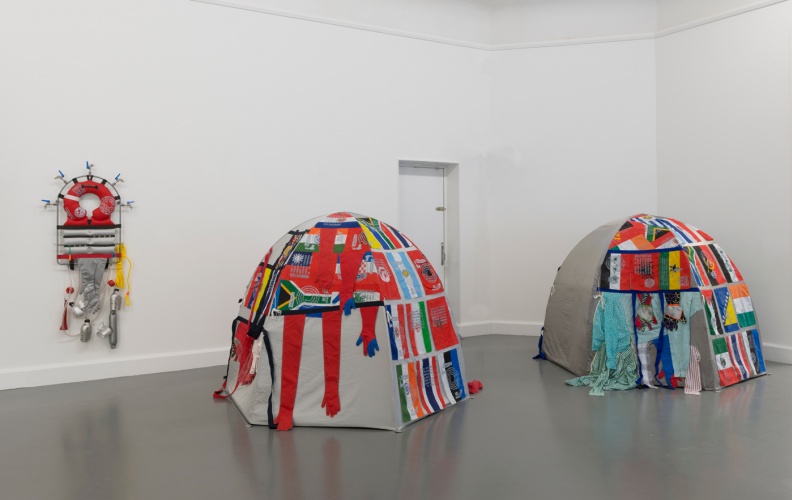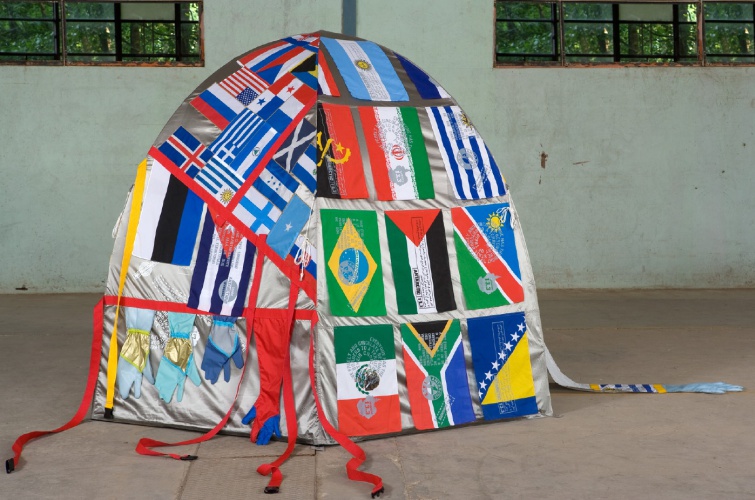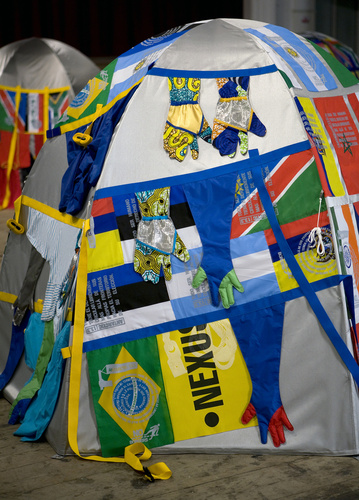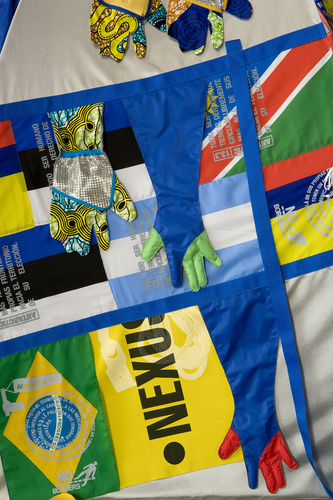Antarctic Village [Dome Dwelling]
Date:
2008
Ref:
5001-25
Matériaux:
Coated polyamide, various textiles, nation flags, silkscreen print, second hand clothes, webbing, clips
Dimensions:
180 x 180 x 150cm each Dome (25 unique works)
Catalogued:
Antarctica, Electa Mondadori, 2008, pp. 30, 95
Exhibition history:
2013 VanAbbe Museum, Eindhoven, Holland; 2012 Tufts University Gallery, USA; 2009 Royal Academy of the Arts London, UK; 2008 Hangar Bicocca Milan, Italy; Galeria Continua Le Moulin, France; 2007 End of the World Biennale, Antarctica
Courtesy:
Lucy + Jorge Orta
‘Antarctic Village No Borders’ is a key work in the long-term research project ‘Antarctica’ led by Lucy + Jorge Orta’s addressing issues relating to the environment, habitat, autonomy, mobility, politics and cooperation. Antarctica the coldest place on the planet with temperatures reaching minus 80°C. 68% of the planet’s freshwater is locked in ice caps and glaciers, slowly melting due to rising global temperatures. Antarctica has no native population nor permanent human settlement. It is the only politically neutral region on earth. The governing Antarctic Treaty decrees a common ground for collaborative research, environmental protection, and weapons are banished.
Lucy + Jorge’s ‘Antarctica’ project reimagines the continent as a message of peace and hope for future generations, a vision of Utopia. Its extreme climate imposes mutual aid and solidarity, freedom of research, international cooperation for the wellbeing of the planet. Antarctica’s glacial landscape contains the wishes of humanity; in the words of the artists, the white light of snow passes through an ice prism revealing a kaleidoscope of colours that make up the spectrum of our nations.
In 2007, at the end of the Austral summer, Studio Orta embarked on an incredible journey to Antarctica. Aided by the scientists and crew stationed at the Marambio Base, Antarctic Village No
Borders was installed on the continent in a symbolic act. The dome-shaped tents of the village reflect the qualities of nomadic shelter, a signifier of the struggle to gain freedom of movement and a safe place to reside. The domes are assembled using traditional tent-making techniques onto which are stitched second-hand clothing and glove extensions symbolising the multiplicity and identity of cultures. World flags are overlaid with silkscreen printed text excerpts proposing an amendment to the UN Declaration for Human Rights, “Art 13.3.: Everyone has the right to move freely and cross frontiers to their chosen territory. No individual should have an inferior status to that of capital, trade,
telecommunication, or pollution that traverse all borders.”
